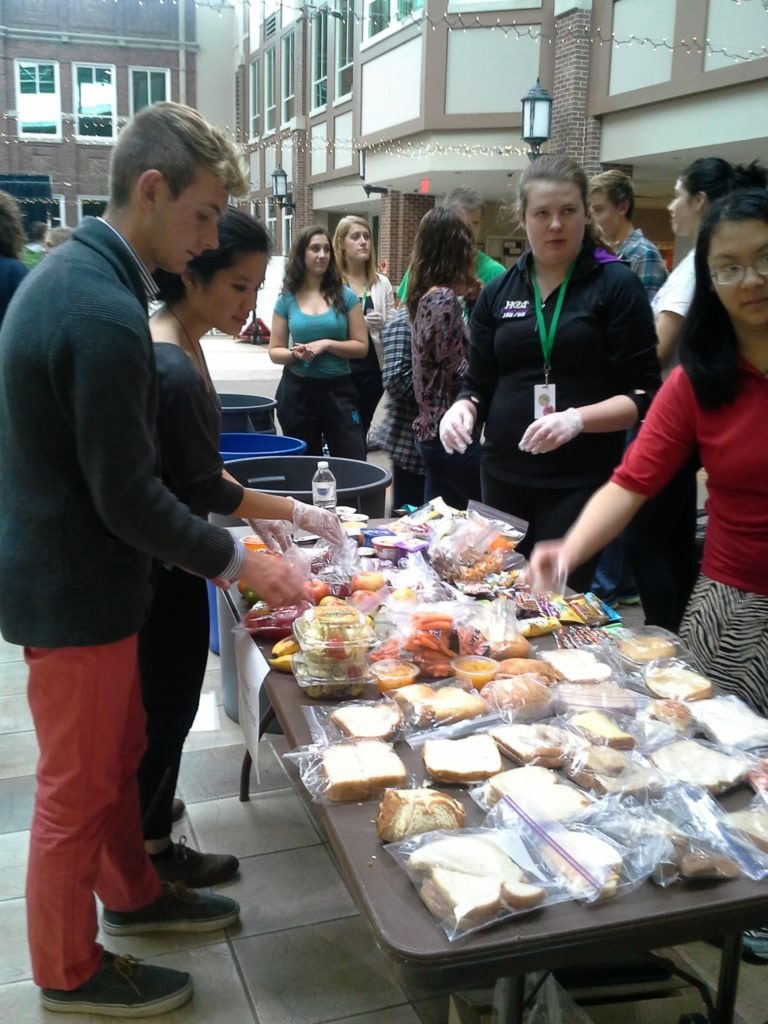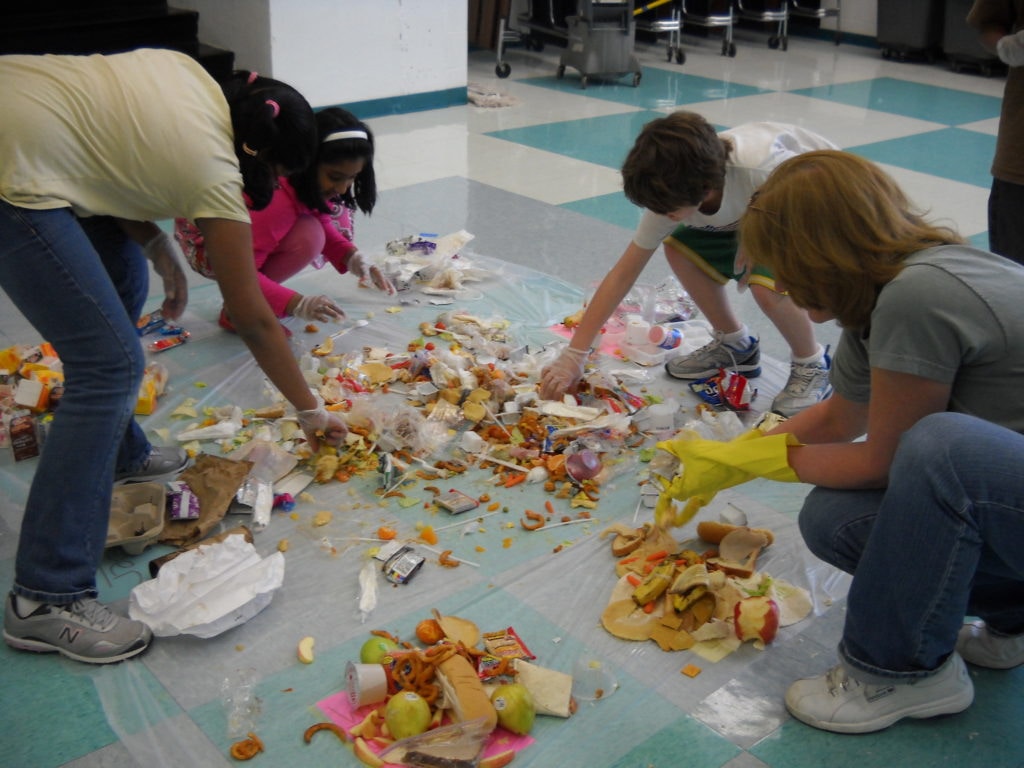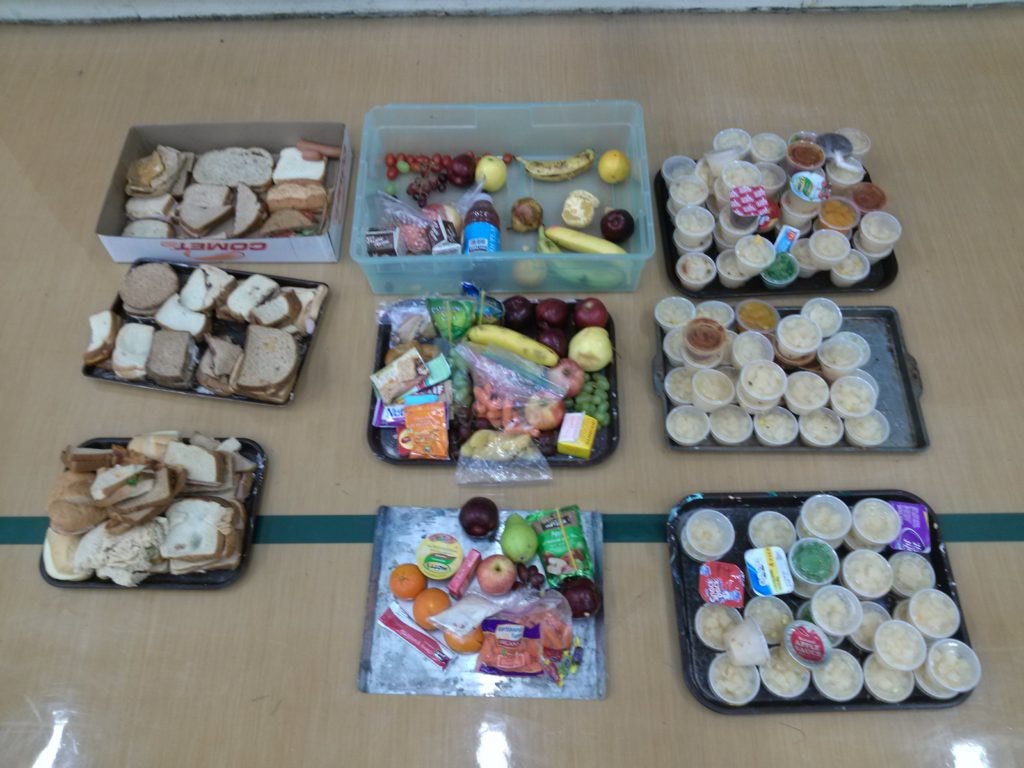News,
New Law Encourages Schools to Donate Food
Aug 22 2016
This is Part 1 of a series. Read Part 2
SCARCE Director, Kay McKeen has long been aware of the issue of food waste at schools. It is exactly why SCARCE offers lunchroom waste audits: so that schools may understand what their waste is composed of in order to decrease it through reducing (switching to reusables for example), recycling, and composting. It was these lunchroom waste audits that brought a specific problem to her attention. SCARCE staff and students would find trays and trays worth of untouched or unopened packaged food in the trash. So, the big question was, why?
Why all the Waste?
When Kay dug to find out why schools had so much food waste in the lunchroom, what she found out was shocking. Many schools had language in their food service contracts that did not allow the donation of uneaten food. Further, many expressly stated that food was the property of the food service provider and must be returned or thrown away (the more common practice). Other schools were simply unsure if they were allowed to donate excess food – whether or not it was written into their contract.
For the past year Kay worked with Jennifer Walling, Executive Director of the Illinois Environmental Council, to get a state-level bill written and signed into law that would prohibit any language in school food-service contracts that prevents donation of leftover food items. The Food Donation for Schools and Public Agencies bill was signed by Gov. Rauner on July 15, 2016 and took effect immediately.
Feed People, Not Landfills
When it comes to food waste, Kay McKeen has two priorities: (1) make sure people are fed, and (2) make sure landfills are not. Children can be fickle – they don’t always want to drink juice if it isn’t their favorite flavor, or eat carrots if they don’t have dip or enough time in which to eat them all (lunch time has gotten shorter and shorter, but that’s another story). They may have to be provided with all the items when getting a meal at school (per federal nutrition standards) but why not let them put items back that they do not want? An unopened bag of carrots or unbitten apple is perfectly safe to put back for another kid to have.
Kay has thoughts on reducing food waste in the lunchroom, now that it is explicitly legal to donate food. She would like schools to consider a sharing cart or sharing table in the lunchroom. Any unopened, whole foods that students do not want to eat from their lunch tray can be put back for other students who may still be hungry. Next, Kay sees a collaboration between lunchroom staff, school nurses, and before/after school and free/reduced lunch programs. They’ve got this food, it’s already been paid for by taxpayers – let’s use it and not waste it. The food can be shared or “donated” to other programs at the school that provide snacks or meals to students.
Another opportunity to reduce food waste and help feed a child is to send home snacks with the most vulnerable of students – those that do not have dependable meals outside of school. Giving a child a snack to take home for the night or the weekend is most certainly a worthy use of these food resources. Long term, schools can set up relationships with local food pantries and rest assured that they are not only protected from liability by the Emerson Good Samaritan Food Donation Act (passed back in 1996) but they are not violating their contract by donating food.
There’s a reason “Reduce” is the first of the 3Rs
School food waste is not only a waste of taxpayer money. Foods sent to the landfill decompose and create methane gas, a powerful contributor to climate change. Further, it takes water, energy and more to grow and process food so making sure we feed people is the best use of those invested resources, rather than sending food to the landfill or even the compost pile. These reasons are why the EPA and the USDA have a target of reducing food waste, nationwide, by 50% by 2030.
Happily, SCARCE has been helping DuPage County schools to reduce food waste through composting for a number of years. In the past year alone, 2 school districts implemented commercial food scrap composting in their cafeterias and kitchens district-wide. Now the goal will be to introduce donation of whole foods before the scraps are composted. We are happy to be there to help schools and kids be a part of the solution.
SCARCE owes a HUGE “Thank You!” to Jen Walling of the Illinois Environmental Council for understanding the importance of helping schools reduce food waste and working to get this law passed!

Students gather around a full, 6 foot-long table of uneaten, whole foods found during their school’s lunchroom waste audit.
Read Part 2 of this blog: Lunchroom Sharing Programs Curb Waste & Feed Kids
Extra Resources
- Want to get a handle on your school lunchroom waste? Contact SCARCE to schedule a lunchroom waste audit.
- To read more on the IL Public Act, check out this story on WJBC or this from the Illinois Sustainable Technology Center.
- Here’s a direct Link to the Food Donation for Schools and Public Agencies Act, as passed. Public Act 099-0552.
- US EPA Food: Too Good to Waste Free toolkit to run a food waste reduction campaign
- Want ideas and recognition for your school’s hard work reducing food waste? Check out ISTC’s Green Lunchroom Challenge and the Illinois Food Scrap Coalition
- Check out this free tool for logging food donations and a local success story.
- Just to show we aren’t the only ones trying to find solutions check out a school in Bremerton WA already sharing.

